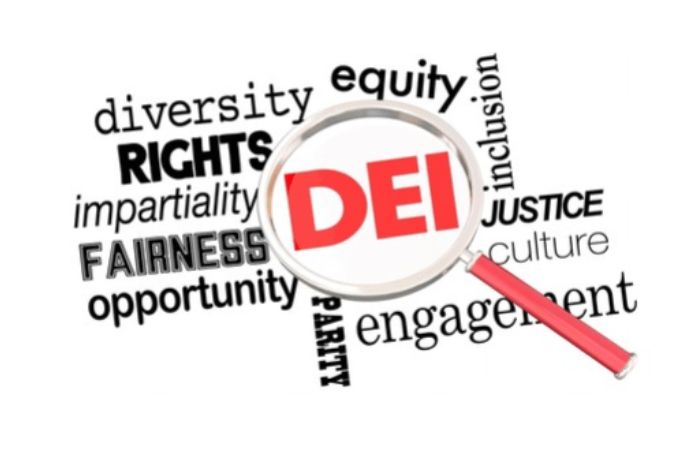In today’s diverse and inclusive world, organisations recognise the importance of implementing robust Diversity, Equity and Inclusion (DEI) policies. Its significance gets gauged from a survey of employees at more than 1,700 companies in eight countries and across industries which discovered that companies with more diverse management teams achieved 19 per cent higher revenues due to innovation (KPMG, n.d.). DEI policies are strategic frameworks that promote equal opportunities, eradicate discrimination and foster a culture of inclusion within workplaces. As societal attitudes and regulatory landscapes evolve, tracking DEI data becomes essential to ensure compliance and measure progress. This article explores the concept of DEI policies and guides effectively tracking DEI data in light of changing regulations.
Understanding DEI Policies
DEI policies encompass a range of practices, guidelines and initiatives which aim to promote diversity, equity and inclusion within organisations. These policies get designed to address systemic biases, eliminate barriers to inclusion and foster a sense of belonging among all employees. The fundamental components of DEI policies may include
1. Recruitment and Hiring: Establishing equitable hiring practices to attract diverse talent and eliminate selection process bias.
2. Training and Education: Providing diversity and inclusion training programs to educate employees and raise awareness about unconscious biases and discrimination.
3. Employee Resource Groups (ERGs): Encouraging the formation of ERGs to support underrepresented groups, provide networking opportunities and promote inclusivity.
4. Pay Equity: Conduct regular pay audits to ensure equitable compensation practices and address all gender or racial pay gaps.
5. Promotion and Advancement: Implementing transparent and fair promotion processes that enable the growth and development of all employees.
6. Inclusive Policies: Creating policies that support work-life balance, flexible working arrangements and accommodations for employees with disabilities or other specific needs.
Tracking DEI Data
Tracking DEI data allows organisations to monitor their progress, identify areas of improvement and ensure compliance with changing regulations. Here are some steps to effectively pursue DEI data:
1. Data Collection: Commence by collecting relevant data on employee demographics, including race, gender, age, ethnicity, disability status and other diversity dimensions. Ensure that data collection practices comply with local laws and regulations concerning privacy and data protection.
2. Define Metrics and Goals: Establish key performance indicators (KPIs) and goals related to DEI. These may include representation targets, employee satisfaction surveys, diversity ratios at different organisational levels and feedback mechanisms to assess inclusion.
3. Regular Data Analysis: Conduct regular data analysis to assess the progress and effectiveness of DEI initiatives. Identify trends, disparities and areas requiring improvement. This analysis gets used for decision-making and guiding future strategies. For example, a finance company will benefit immensely, as per a study conducted that reports ethnically diverse teams were 58% more likely than homogeneous ones to price stocks correctly (Harvard Business Review, 2022).
4. Benchmarking: Compare your organisation’s DEI metrics with industry standards and best practices to gain insights into how your organisation stacks up against others. It can help identify areas for improvement and set realistic goals.
5. Stay Updated on Regulations: Keep abreast of changing regulations and legal requirements related to DEI data reporting. Stay informed about industry-specific guidelines, government mandates and reporting frameworks to ensure compliance.
6. Internal Communication and Transparency: Establish clear communication channels to share DEI data and progress with employees, stakeholders and the public. Transparency builds trust and accountability and demonstrates a commitment to DEI.
7. Adaptability and Flexibility: As regulations change, be prepared to adapt your DEI data-tracking processes accordingly. For instance, Australia has made huge strides towards improving working conditions for women and reducing pay disparity. The new law mandates reporting pay gaps by 100 employees from early next year (Mint, 2023). Staying flexible and responsive to evolving reporting requirements assists in avoiding non-compliance.
Diversity, Equity and Inclusion (DEI) policies are critical for creating inclusive workplaces. Organisations must establish data collection practices, define relevant metrics and goals, regularly analyse the data and stay updated on changing regulations to pursue DEI data effectively. By tracking DEI data and responding to evolving requirements, organisations can ensure robust DEI Policies get followed, yielding results.
Bibliography
1. Harvard Business Review, March-April 2022. Diversity And Inclusion. [Online]
Available at: https://hbr.org/2022/03/data-driven-diversity
[Accessed 29 May 2023].
2. KPMG, n.d. Insights. [Online]
Available at: https://kpmg.com/xx/en/home/insights/2021/03/reimagine-the-workplace-to-make-dei-a-post-pandemic-priority.html
[Accessed 29 May 2023].
3. Livemint, 2023. World. [Online]
Available at: https://www.livemint.com/news/world/australia-introduces-laws-to-tackle-gender-pay-gap-what-new-rule-states-11680526984313.html
[Accessed 30 May 2023].
4. Image Soure- Shutterstock, n.d. [Online]
Available at: https://www.shutterstock.com/image-illustration/dei-diversity-equity-inclusion-magnifying-glass-2105834861
[Accessed 29 May 2023].

